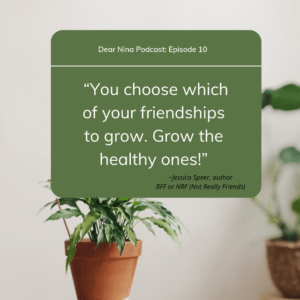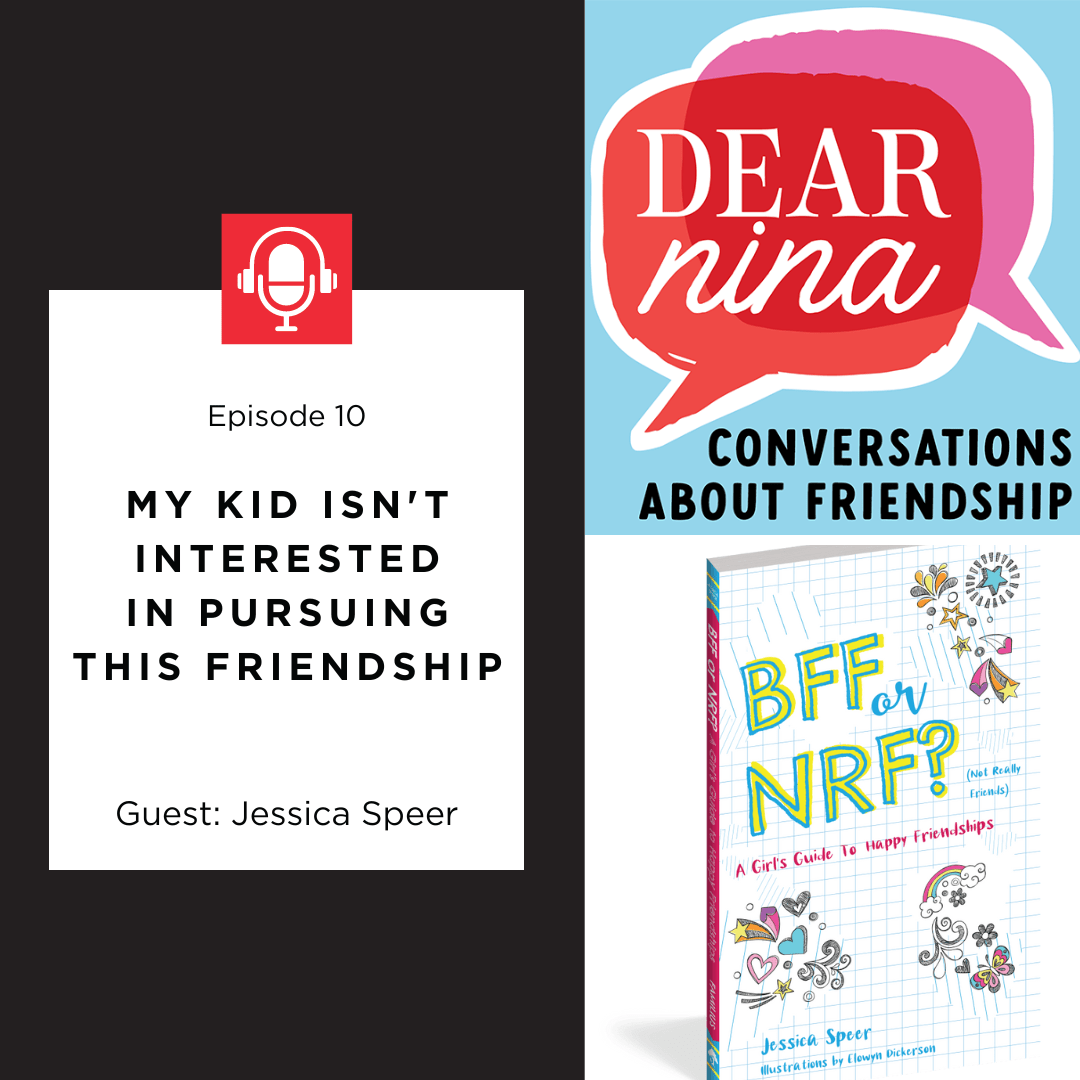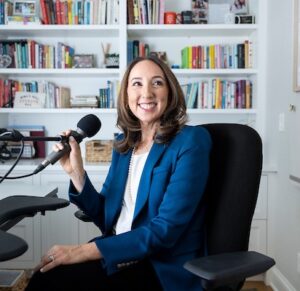In episode #10 we’re discussing what to do when you’re not interested in pursuing a friendship, but you don’t want to be unkind when subtly communicating that message to an acquaintance. And how do we help kids make decisions about which friendships to pursue? It can get hard—really it’s tricky—to simultaneously teach kids to make their own decisions about friendships while teaching them to treat people with kindness.
I have THE PERFECT guest to help me dissect this issue of balancing kindness and inclusivity but also boundaries and independence in friendship decisions.
FIND EPISODE 10 OF DEAR NINA ON APPLE PODCASTS, SPOTIFY, OR ANYWHERE YOU LIKE TO LISTEN TO PODCASTS! You can also listen below.
Jessica Speer’s book, BFF or NRF (Not Really Friends)? A Girls Guide to Happy Friendships grew out of her friendship program that strengthens social awareness and helps kids learn to navigate common struggles. Her books engage and entertain readers by combining the stories of preteens and teens with fun activities and practical insights. She has a master’s degree in social sciences and explores social-emotional topics in ways that connect with kids. In addition to writing books, Jessica regularly contributes to news outlets on topics related to kids, parenting, and friendship. She lives in the mountains of Colorado with her husband and two daughters.
Jessica explains important friendship skills in her book, skills some adults still lack. This concept that friendship skills are learnable and we can improve on them is really empowering. Some examples: how to listen, dealing with jealousy, allowing friends to be with other friends, being reliable, thinking before you speak, offering sincere apologies, navigating conflict.
Here’s the letter that Jessica and I discussed
Dear Nina,
I want my 11-year-old daughter to make her own decisions about her friendships, but I also want her to be kind and inclusive. There are a few girls her age who have reached out to her with texts for “hangouts,” but my daughter isn’t interested. Her reasons, when I push her on it, vary from “I don’t like her,” to “she’s annoying,” to “ugh, Mom.” It’s clear that she and four other girls are a clique and have little interest in including anyone else.
How do I balance encouraging my kid’s independent decisions with my even bigger desire to demand kindness out of her? I have an older son, who was often left out at this age, so I know what it’s like to see your kid not included. I don’t want my daughter to be the cause of hurt feelings, but now that I’m on this side of things, I see it’s more complicated than I thought. I used to say when my son was going through this stuff, “I’d never let my child act that way.” Well, we can only control so much, I guess.
I’d love any thoughts. Thanks, Nicole
Notes from my conversation with Jessica
— There are two issues here: teaching kids how to make decisions about their friends with kindness, and Nicole (like most moms), not wanting the other moms to think she’s allowing her kid to be mean.
— We talked about how Nicole’s daughter can be kind to these girls without having to invite them to her house to hang out, how does she act friendly to them at school without sort of “leading them on” about the status of their friendship.
— In the context of discussing how Jessica and I both wished that the girls texting Nicole’s daughter would realize this group is really not for her, Jessica mentioned that parents should get started early helping kids understand that, “Not everybody is going to like you. You’re not always going to be included. And not every friendship is going to feel like a fit.”
— We talked about how much pressure we parents put on other peoples’ kids to make our kids feel okay. It would be so much easier, of course, if our kids were always included on the group text and included in every outing, but they wouldn’t learn the resiliency skills they need or know the difference between a true friend and someone who isn’t a good friend.
— We talked about some mistakes I’ve made in the past in getting too involved in wanting my kids to include others and wanting my kids included. Jessica says we’ve all made mistakes!
— One benefit of texts between friends is having a moment to think about what you want to say. Take advantage of it.
— One downside of texts for middle school kids is the cut throat nature sometimes of who is on the group text and who isn’t. Not being on the group texts means you don’t always know what the plans are.
— Jessica mentioned a UCLA study in our discussion of how the norm for middle school friendships is huge changes and flux all the time.
— We talked about how the kids who are too cliquey will also learn through experience eventually that people don’t root for you, don’t wish you the best, and don’t want to hang out with you when you’re always leaving out others.
BETTER FRIENDSHIP GOAL OF THE WEEK
Throughout the book, Jessica mentions nine friendship truths, and I picked my favorite for the goal of the week, which was #9. “You choose which of your friendships to grow. Grow the healthy ones!” So that’s my assignment for all of the adults listening and for us to teach the kids in our lives— grow the healthy ones!
ASK AN ANONYMOUS QUESTION ANY TIME!
SEE PAST EPISODES WITH SHOW NOTES.
JOIN THE DEAR NINA FACEBOOK GROUP!
FOLLOW ALONG ON INSTAGRAM.

Latest posts by Nina Badzin (see all)
- #148 – Tricky Friendship Etiquette for the Modern Age - May 26, 2025
- Dear Nina on NPR - May 24, 2025
- #147 – Share Good News With Your Friends - May 20, 2025
- #146 – Tolerate Uncertainty & Stop the Overthinking Spiral in Your Friendships - May 13, 2025


